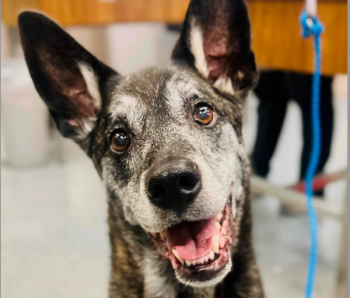
Hey, vet school: Grads not earning? No loans for you!
The Department of Education can deny some schools federal loan dollars if their graduates dont wind up with a decent income. What are the implications for the veterinary profession and its off-kilter debt-to-income ratio?
The government could withhold federal loans from veterinary schools whose graduates make lousy salaries.(Illustration Getty Images)The recent Fix the Debt Summit hosted by the American Veterinary Medical Association (AVMA) and Michigan State University in April was surprisingly timely considering a recent federal court ruling. In March, the U.S. Department of Education (DOE) won a summary judgment in the U.S. Court of Appeals in Washington, D.C., to maintain its so-called “gainful employment” regulations.
These rules, introduced in 2015 by the Obama Administration, determine whether an educational program produces graduates capable of earning enough income to pay their student loans. Failure to meet the gainful employment provisions renders students attending those institutions ineligible for access to federal loans. The rules were challenged by the Association of Private Sector Colleges and Universities but are holding their own in court.
The gainful employment regulations do not apply to public institutions, so most U.S. veterinary schools are not affected. But at the Fix the Debt summit, participants discussed a target debt-to-income ratio (DIR) that would help veterinary colleges comply with the intent of the regulations. In doing this the veterinary profession can help itself and at the same time lead the way for other professions struggling with similar issues.
Uncle Sam doesn't want to pay for degrees that don't pay
The DOE regulations require that most for-profit programs prepare students for “gainful employment in a recognized occupation.” This means, according to the agency, that when students graduate from one of these programs, their monthly college loan payments must not exceed 8 percent of their gross income or 20 percent of their disposable income. If they do exceed this threshold (the schools are required to disclose these statistics to the government), that program becomes ineligible for federal loan dollars.
For-profit institutions have been specifically targeted for a reason. “Based on available data … about 1,400 programs serving 840,000 students-of whom 99 percent are at for-profit institutions-would not pass the accountability standards,” the DOE states in a release. The regulations establish a framework for accountability and transparency for both for-profit institutions and public or private nonprofit institutions. But the DOE makes it clear that the rules came about because of “high costs, poor outcomes and deceptive practices at some institutions in the for-profit sector.”
What does it mean for veterinary colleges?
These regulations are included in the Higher Education Act legislation being considered for renewal in Congress. They currently affect the two AVMA-accredited Caribbean schools-St. George's University and Ross University-but Congress could opt to expand the rules to include all public and nonprofit institutions. Do all our colleges of veterinary medicine meet the gainful employment restrictions? We decided to find out.
The calculations described in the regulations are complicated and somewhat amorphous. We simplified things by using the mean debt from students who indicated they had full-time employment prior to graduation. We then amortized the debt obligation at 7.21 percent interest over 20 years.
In the chart below, we use the mean of the debt-to-income ratios, with debt computed according to the DOE regulations. The costs associated with a veterinary degree are not those associated with an undergraduate degree, and we assigned 50 percent of total debt to living expenses. Using this liberal approach, there are just nine schools that meet the DOE benchmark.
Comparison chart: Veterinary schools and gainful employment
The Department of Education requires that the federal loan payments made by graduates of certain programs not exceed a specific percentage of their income. Here's how U.S. veterinary schools stack up, with boldfaced schools exceeding that percentage:
Mean debt payment as a percentage of income No. of students in sample Texas A&M University 10% 79 Louisiana State University 14% 34 Washington State University 14% 52 Purdue University 15% 34 Oklahoma State University 15% 49 Auburn University 15% 41 University of Tennessee 16% 30 University of Georgia 16% 45 University of Wisconsin 16% 30
Oregon State University
17%
19
North Carolina State University
17%
26
University of Illinois
17%
58
Kansas State University
17%
43
Virginia-Maryland Regional College of Veterinary Medicine
18%
45
University of Missouri-Columbia
18%
63
University of California-Davis
18%
35
Cornell Veterinary College
19%
22
University of Florida
20%
41
Iowa State University
21%
75
The Ohio State University
22%
57
Cummings SVM at Tufts University
23%
25
Michigan State University
24%
44
Colorado State University
25%
49
Mississippi State University
26%
31
University of Minnesota
26%
40
University of Pennsylvania
26%
28
Tuskegee University
29%
22
Western University-California
37%
23
Total
19%
1,140
Veterinary education's big 10-year plan
Recommendations from the recent AVMA Fix the Debt Summit could move the debt-to-income ratio from roughly 2:1 today to 1.4:1 over 10 years (see
The gainful employment provision could have a major impact on the veterinary profession if it comes to be applied more broadly. As education costs continue to rise at rates that exceed gains in income, financial stress on new professionals will continue to grow and the rising numbers of these professionals will gain an ever-increasing voice in Congress. A proactive effort by the veterinary profession is imperative to reduce the risk of government involvement in veterinary education.
Dr. Michael Dicks is director of the AVMA's Veterinary Economics Division.
Newsletter
From exam room tips to practice management insights, get trusted veterinary news delivered straight to your inbox—subscribe to dvm360.






